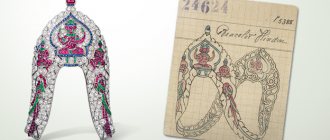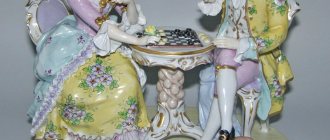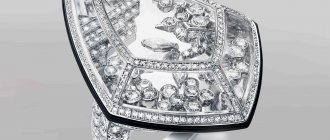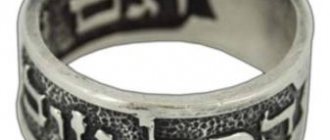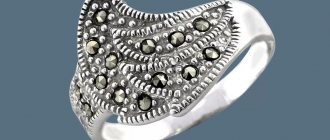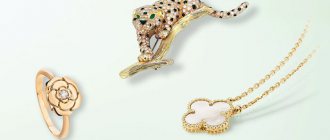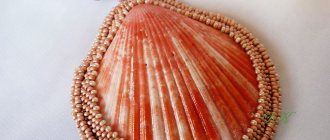Preface from the author
I am equally neutral towards both factions in the game. For me, the Alliance and the Horde are two identical books with more than a thousand pages, covered with exploits, the struggle for a place in the sun and the blood of sins. Having called one of the factions good, I would automatically write off all its vices. A lot of them. So many that the scarlet-blue wars are doomed to exist forever: there is no point in remembering who started them - the third generation is already growing up with memories of fallen warriors and defenders on both sides of the barricades.
Players not only see the ambiguity in the actions of peoples and factions - they themselves create this ambiguity, they themselves participate in untying some inflamed knots and tying dozens of others. This makes playing World of Warcraft interesting. If all the attention goes only to their big conflict, interest can quickly burn out.
Azeroth is a vast world, and its peoples are woven into a complex network. Not everyone cares about big wars. Not everyone agrees to cherish old grievances and open old scars. Many people just want to live, because the war is somewhere out there, far away, and they live here, on the other side of the world, where there are also enough problems and misfortunes, where there is also grief and joy.
Yes, I love the Alliance and the Horde. But what I like more than them are the archives of the history of the third-rate parties to the conflict. I love walking through the back streets of kingdoms, exploring the ruins of temples, descending into the caves of empty mountains, listening to stories and retellings by the fireplace in ramshackle shacks. While the “great war” shapes heroes and characters, such inconspicuous details weave the idea of entire kingdoms and even nations. And here everyone has something to tell and something to remain silent about.
For example, the people of the Alliance, originally described as the light of nobility, the side of good and the only support for all of Azeroth. How is it that such a righteous race is constantly at war with bandits in Elwynn Forest? Why are human roads perhaps the most dangerous for traders? And whose evil will has clouded the minds of the brilliant engineers creating killing machines in the fields of the Western Land?
Within the framework of this material, I would like to weigh the righteousness and sins of the human people. There is one suitable example in his story that clearly demonstrates who people are and what they are capable of. The Brotherhood of Defias and its leader, Edwin van Cleef, are under the watchful eye of the Herald of Azeroth.
Artist: Elizaveta Suhoveeva
Dead mines
Source of information in this section – World of Warcraft Classic
.
Edwin's secret refuge was the Dead Mines, located under the Westfall Mountains. He is on board a ship in a vast grotto and was waiting for the right moment to finally deal with his enemies - the Stormwind nobility. However, a traitor also appeared among the Brotherhood, who agreed to cooperate with government officials. He led a squad of heroes through a secret passage into the Brotherhood's hideout, and the massacre began.
The heroes were able to make their way to the ship on which Van Cleef was hiding, and defeated his closest associates. Vanessa, Edwin's daughter, hid in a secluded place and watched as the heroes destroyed her father and cut off his head as proof of their victory. The head was delivered to Grian Stonemane, who declared that this event meant the collapse of the Defias Brotherhood.
Who is Edwin Van Cleef?
No one knows for sure where Edwin was born or what his parents were called. It is known that he was the son of a master mason who became famous in several kingdoms - most likely in Lordaeron and Stromgarde - and gathered a full-fledged guild under his leadership. The established workshop included exclusively masters of their craft and invited new architects, engineers, and experts in the processing of stones and ores. The guild established itself so well that soon nobles and members of the royal court began to use its services.
Perhaps inspired by the example of the guild or inspired by the results of its work, Edwin decided to follow in his father's footsteps. From early childhood, he began to study the basics of science and modeling, and quickly mastered geometry and arithmetic. It is not clear whether Edwin studied at a specific academy or listened to his father's instructions, but upon reaching adulthood, the young Van Cleef officially joined the masons' guild as a master. Lordaeron and other kingdoms constantly expanded, the influence of humanity increased, which attracted new traders and merchants. With the moneybags came problems - be it robbers, raiders or savages from other races. Every now and then new towers and walls were required, strengthening of fortresses, construction of bridges, construction of canals and drains. The guild had enough work, and they paid generously for it.
Edwin Van Cleef was as happy as a well-to-do man could be. He increased his knowledge with experience, his name became famous. It seemed that Edwina would lead such a life until her death.
Battle of the shores of Menethil Harbor. Second War / Artist: Manar Ii
Early years and first roles
Lee Van Cleef was born in 1925 in Somerville (New Jersey), where he spent his childhood.
From 1942 to 1946, the future actor served in the US Navy on a submarine. During this time, he had the opportunity to visit various parts of the Earth - the Caribbean, Black and South China Seas. It is also known that he was awarded several medals for his service.
In the second half of the forties, Lee Van Cleef changed a number of professions (in particular, he was an accountant), after which he decided to take up acting (he was well aware that he had an appearance quite suitable for this). He joined one of the New Jersey theater troupes. Quite soon, Van Cleef was noticed and given a small role in a Broadway musical.
The actor’s first film work was a small role as criminal Jack Colby in the classic 1952 western film High Noon. And although this character had almost no dialogue, Lee Van Cleef's performance was memorable.
After that, he starred in a number of low-budget films. Examples here include such now almost forgotten films as “The Beast from 20,000 Fathoms” (1953), “Gypsy Colt” (1954), “Yellow Tomahawk” (1954), “The Vanishing Americans” (1955), etc. .d.
And the Horde struck!
They came so suddenly that they didn’t believe in them even after seeing them in person. Tall, strong in body, vaguely reminiscent of people crippled by persistent leprosy. Their skin was brown, or, on the contrary, shimmered with shades of emerald color. The invaders were of a single race, all of them had excellent command of weapons - be it a spear capable of piercing a well-riveted cuirass; an ax that would cut off a horse's head from its neck; or rough-hewn swords, devoid of grace and careless, like a butcher's cleaver.
It is not known for certain who first called this race orcs. Perhaps they introduced themselves this way - after, or this name appeared through the efforts of military men and magicians at the court of Stormwind. The people of this kingdom were the first in Azeroth to encounter the so-called Orc Horde.
Artist: John "JD" Dixon
Here's what the general of the Stormwind army, Commander Anduin Lothar, wrote about the orcs:
“And as soon as the last sands woke up through the hours, cadavers appeared in the cells - the essence is a reflection of the human race, converted by vices and sins. With otherworldly malice they rushed at every living thing, always striving to turn what had been built into ruin, and what was living into death. And the cadavers had no god, except for the sorcerers who led them, whose nasal altars were erected from rough stone on the ashes, from where the earth was poisoned for entire leagues, saturated with the bonds of darkness. Black probes deceived the unlucky and unpretentious, grabbing them in snares and pumping out energy for dark magic. The witchcraft of those sorcerers was disgusting both to all magicians, be they from human or elven cells, and to the entire fertile land of Azeroth. Its essence was based on rituals on blood and bones, rumors with the souls of the fallen and command of the dead..."
Fall of Stormwind / Artist: Stanton Feng
The orcs quickly showed their hostility. Or it was a matter of the wrong reaction of the people themselves. Perhaps everything happened at once. The relationship between the two races did not work out initially. One by one, the Stormwind garrisons at the distant outposts disappeared. In return, the knights slaughtered entire groups of uninvited aliens. Very soon the conflict escalated into a full-scale war.
The messengers of Stormwind scattered to all corners of the state, the garrisons rallied into several armies. The Horde marched towards the capital, and when it came to Stormwind, high and strong city walls awaited it, on which angry people had gathered. The impressive defense impressed even the most confident of Orc commanders. They understood that the battle would be bloody. And they were openly happy about it.
Taking Stormwind was a matter of time and means. At some point, the people of Stormwind themselves realized this. The Horde, nothing less than an oceanic wave, rushed against the walls of the city several times, suffering huge losses, but there was no end in sight to its ranks. Neither the wisdom of the kingdom's generals nor the steadfastness of its defenders could stop the orcs. People accepted this fact and decided, if not to defeat the Horde, then at least to sell their lives at a higher price. And they succeeded.
Stormwind fell after several days of siege. The orcs, crazed with bloodlust, invaded the city districts and carried out a real massacre there. Filled with anger, they set Stormwind on fire to destroy every reminder of the people. The pitiful militia, assembled from those who did not want to leave their hometown on ships, was quickly and especially brutally destroyed.
Chief Orgrim Doomhammer, leader of the Horde in the First and Second Human Wars / Artist: Wei Wong
Although the history of the First War did not affect Edwin van Cleef, its outcome would be a turning point in the life of the young master. Considering the specifics of the work of the guilds, which strove for the richest regions of states depending on fame and merit, we can assume several unproven, but obvious facts.
- Edwin van Cleef did not live in Stormwind. Otherwise, he would most likely have fallen in battle with the Horde. Even if he could have been lucky, most likely none of his guildmates would have survived. This follows from the results of statistics. Of the inhabitants of the huge city and the surrounding regions, no more than a dozen ships escaped from the burning Stormwind. Such losses affect the performance of the entire workshop literally on the very first day. Subsequently, Edwin's guild would hardly have been invited back to the ruins of Stormwind to rebuild the city.
- The guild that Edwin was a part of most likely settled in Lordaeron. At that time it was the richest kingdom. Although the services of the guild were probably used by representatives of other kingdoms, it was the capital of Lordaeron that was the most likely home option for a guild of talented and sought-after craftsmen.
Edwin van Cleef and King Varian Wrynn / Artist: Elizaveta Sukhoveyeva
You will learn about the events of the Second War, as well as the defeat of the Horde, sometime next time. All that is important to know for context is that the orcs were defeated and fled in all directions. Most sought to return to the Dark Portal, through which the Horde entered Azeroth. Very, very few people managed to do this.
Some orcs were killed on the spot, in battle. There were those who were captured wounded or surrendering. Disputes began in command circles. Something had to be done with the orcs: either executed or kept in custody. Many, many people wished death to the invaders, but only a few expressed their preferences out loud. There were so many orcs imprisoned that the execution would have been an act of genocide.
Again, what stopped the rulers of human kingdoms from destroying an entire race of aliens? Was it pity? Reluctance to shed blood? Stories about the use of orcs in mines and construction? A little bit of everything, perhaps.
People were greatly impressed by the state into which the orcs fell. All of them plunged into real mass apathy, flowing into lack of will. They lost purpose and hope, and at the same time something much more significant - the will of the demonic masters who drove the Horde out of the shadows.
The Extinguished Dark Portal / Artist: Jonathan Barub
After much debate, it was decided to lock the remaining orcs in reservations, on the construction of which huge amounts of money were spent. Money was also allocated for the construction of new fortresses. Although the Dark Portal had closed, it still posed a danger. In the event of a new invasion, the first battle was to be fought by the Fortress of the Guardians of the Void, built several leagues from the portal. The design and construction of the fortress was entrusted to Edwin van Cleef, who by that time had become the head of the guild, replacing his father.
Literally a year later, Edwin’s guild received another, additional order - the same one that promised to glorify his guild, but in fact became a death sentence for both the future of Edwin himself and his fellow masters.
Edwin van Cleef was invited to lead the restoration of Stormwind. Various sources claim that Edwin either lived in Stormwind before, was born there, or never saw this city in his life. We don't know this for sure, unfortunately. But it is obvious that such an order became the work of his whole life. He had a truly titanic job ahead of him.
First it was necessary to establish supplies of timber and stone. At the same time, it was necessary to organize work to clear the area. Stormwind was still a great ashes. These were facades demolished under the foundation, fallen vaults of towers, piles of stones and wood, burnt piers. But above all, Stormwind was full of bodies. Usually, soldiers killed in battle were dragged into heaps and burned, but there were so many bodies that in the end the dead were dumped in canals. One can only imagine what the builders and soldiers experienced while tearing apart one of these crypts.
Updated ports of Stormwind / Artist: unknown
The restoration of Stormwind took about ten years, which is very fast by today's standards. By comparison, the city's main gate, destroyed by Deathwing many years later, would only be rebuilt within a year. This speed of construction was the merit of Edwin van Cleef. With the help of maps of the area and already quite a solid experience, he figured out how to divide the city, divided the zone into sections and sent his craftsmen there.
The builders spared no expense on materials. Taking into account the guilt towards Stormwind, the remaining human kingdoms - from Lordaeron to Gilneas - allocated part of the funds from their own treasury. After all, it was they who refused to help Stormwind when it called for rallying against the orcs. There were plenty of people dissatisfied with this situation, but in general construction proceeded without delays. A new king ascended to the throne of Stormwind - the grown-up Varian Wrynn, the son of Llane Wrynn the First. Varian oversaw the construction for the last few years, right up until the end of the restoration work. It is known that he at least knew Edwin van Cleef, although whether there was friendship between the two is unclear.
Varian Wrynn / Artist: Vetra-vetra
But we know that Edwin van Cleef was friends with another famous Stormwinder - Matthias Shaw. The Shaw family was known mainly by rumor. In fact, the truth about him was much darker. Matthias's grandmother founded the SIU, the Stormwind Intelligence Agency. This organization was engaged in... Public relations and solving sensitive issues concerning the state.
Sometimes with bribery, sometimes with threats, and sometimes with little bloodshed, SIU members helped Stormwind prosper and expand its zone of influence. In addition, the department was engaged in reconnaissance, which was important given the city’s isolation from the rest of the kingdoms.
Perhaps Mathias Shaw did not really want to be a spy, but fate was not interested in his opinion. He and Edwin met in adulthood, and, according to various sources, Edwin eventually learned about the specifics of Matthias's work. Moreover, Shaw hoped to drag Edwin into SI:7, complaining that after the reconstruction of Stormwind, life would no longer present Van Cleef with anything more interesting. However, Edwin never got into the SIU. But I managed to learn a couple of tricks and techniques from Matthias. The two friends often met in training sparring matches on sabers, gradually honing each other's skills.
Mathias Shaw is the head of SI:7 in the current storyline of “Battle for Azeroth.”
Time passed, Stormwind grew and became prettier. Edwin Van Cleef was a man of his word, and his men were masters of their craft. The guild carried out its work conscientiously, and soon the first flags of Stormwind fluttered on the spiers of the renewed towers. The rulers of all human kingdoms arrived for the grand opening. Even the stingiest of them agreed that the money was well spent, and that the costs were more than recouped.
Edwin was pleased with himself. He accepted Varian Wrynn's gratitude and prepared to receive his well-deserved payment for his many years of work. And then something went wrong.
At first the nobles hesitated. They laughed it off and delayed payments until Edwin van Cleef raised the issue head on. The workers were unhappy with the state of affairs. The behavior of the authorities frankly strained them. Representatives of the royal court offered Edwin an audience.
In private, without prying ears, the nobles offered Van Cleef a tidy sum for persuading his craftsmen to accept a much smaller share of the payment. When Edwin indignantly refused, he was told that his work could easily be devalued. This was the last straw for Edwin. He left, throwing curses at the entire royal court. And after some time, a real protest broke out in the city.
There are no surviving sources that would accurately indicate who supported the protesting masons and who did not. But the fact that protesters filled the city and surrounded the fortress is a fact. It is also not entirely clear whether Varian Wrynn was aware of the situation. At that time, he spoke to his people through his advisor, Katrana Prestor. This lady was, frankly speaking, controversial. On the one hand, she knew how to be affectionate and courteous with the king, and on the other, she exuded a cold danger that she did not want to go against.
It was Katrana who was behind the reluctance of the nobles to pay the required share. Lady Prestor was not lacking in insight and saw that the nobles who fled Stormwind during the First War and returned now were eager to pay their bills. On the other hand, the people of Stormwind themselves were not happy with many representatives of the nobility. Some of them were even considered traitors by the townspeople. What kept citizens from splitting was the relative peace in the world. After the defeat of the Horde, the kingdom rose from the ashes and gradually increased its influence in the world. Stormwinders didn't complain about poverty.
Moreover, the construction of a new port established sea connections with other capital cities, and now Stormwind was returning to the sphere of trade, which opened up enormous prospects for the kingdom. But this situation did not make Katrana Prestor very happy. She had her own plans for Stormwind, as well as for the entire kingdom as a whole. Something sinister was hiding behind the guise of a beautiful lady. However, this is a topic for a completely different material.
What is Lady Katrana Prestor hiding?
/ Artist: Yeehso Lee Through the efforts of Katrana, the people rebelled. The dissatisfied took to the streets under loud slogans. They demanded legal payment, ridiculing the local nobles. The annals of Stormwind do not tell how long the unrest continued until the king's wife, Tiffin Wrynn, came out to the people. The Queen tried to calm the protesters, urging them to curb their anger and give time for proceedings, but suddenly something terrible happened.
Either through carelessness or malicious intent, someone from the crowd threw a stone, hitting Tiffin right in the temple. The Queen did not have time to finish her speech when she suddenly fell onto the stone steps, dead.
There was a commotion. The guards rushed to push back the protesters. Someone rushed towards Tiffin. Many people on both sides of the barricades were in indescribable shock. The people loved the queen, endlessly respecting her kindness and decency. News of her death spread throughout the kingdom instantly. Varian Wrynn fell into apathy. Taking advantage of this, Katrana ordered the protesters to be punished, placing all the blame for what happened on them. And let no one in the end find out whether the queen was killed due to the evil intent of the protesters, or whether it was a cunning trick by Katrana herself. The queen's death was the point of no return. From the very day Tiffin Wrynn's spirit left her body, so did her hope for a peaceful resolution to the conflict.
Edwin van Cleef fled Stormwind. His masters and assistants were seized by guards and city militias. Very few managed to escape from the city and hide in the depths of the Elwynn Forest. Very soon Edwin had to move even further, to the Western Land. He will never again see the picturesque vaults of the city, which he personally erected for ten years.
Guardian of Westfall / Artist: Veensa / magikarp used splash!
Van Cleef & Arpels - a story of love, beauty and success
Fairy tales usually end with a happy wedding, but the fairy tale story of Van Cleef & Arpels began with how fairy tales usually end. In 1896, the daughter of a Parisian gem dealer, Estelle Arpels, and the son of an Amsterdam diamond merchant, Alfred van Cleef, were united in a blessed marriage. It was inevitable that a family business would emerge, and 10 years later the family opened a jewelry store in the center of Paris at 22 Place Vendôme. The Arpels collected unique stones from all over the world: the purest, the rarest, the most beautiful, and then turned them into works of jewelry. Working exclusively with the highest quality materials, Van Cleef & Arpels quickly established itself as a pioneer in the field of fine gemstone processing and acquired an impeccable reputation throughout France.
At first, the business was led by Alfred and his wife's brother Charles, but they were soon joined by gem experts Julien and Louis Arpels. Their participation predetermined the success of the family enterprise. With the arrival of Charles in 1906, the Van Cleef & Arpels trademark was registered. Everyone in the company was involved: Estelle did the accounting, Alfred and Charles were responsible for commerce, and the rest of the family were responsible for impeccable quality.
At the International Exhibition of Decorative Arts in 1925, the brand was awarded the Grand Prix (the Deux Roses brooch - “Two Roses” - in the form of two flowers, one of which is made of ruby drops with a yellow diamond in the center, and the second is made of many diamonds); in 1931 it received the Grand Prix of the Colonial Exhibition in Paris, and in 1931 Van Cleef & Arpels received a special prize "out of competition" at the World's Fair in New York... The exclusivity and classic beauty of Van Cleef & Arpels jewelry, supported by business observation hereditary traders, ensured the House quick success. By 1935, the company's watches were presented in all the fashionable resorts of the Cote d'Azur - from Dinard to Monte Carlo, with great profit indulging the high society fashion for sea holidays.
But one gemstone is not enough to achieve success. Even carbuncles of exceptional purity require further processing. We are talking not only about cutting, but also about design decisions, which, in fact, form the general impression of the manufacturing company. In 1926, the post of art director of the House was taken by the daughter of Estelle and Alfred Rene, Pusan. This appointment played an important role in the further development of the brand and the establishment of its corporate identity. As a result of Rene's collaboration with designer Sim Lacaze, amazing creations emerged, simple in concept and extremely complex in implementation.
And in 1930, Charles Arpels spied on millionaire socialite Florence Jay Gould, who was hiding lipstick in a tin box at a ball. So he invented the minaudiere - a precious case for storing cosmetics. This little thing has become one of the most successful inventions of the House and an indispensable attribute of women's evening wear. Van Cleef & Arpels developed their own style, not subject to fashion trends, moving confidently in the chosen direction, like a powerful icebreaker through eternal ice.
In the 30-50s, when the House was headed by the second generation of the Claude and Jacques family, and part of the workshops moved to America (the first boutique in New York was opened in 1939 by Pierre Arpels, now it is located on Fifth Avenue, in the house 744). Jacques Arpels' keen eye became legendary after he canceled the sale of the Deepende, a 104-carat daffodil-colored diamond, at Christie's. Despite the fact that the stone was natural, someone skillfully worked on its unique color scheme. Jacques, unlike other specialists, noticed this and, destroying the illusions of potential buyers, forced the entire jewelry elite to talk about him. “Stones do not keep secrets from those who love them selflessly,” he said, “you need to have enough wisdom to understand that authenticity and beauty are inseparable from each other.”
The house's know-how was born - the “Mystery Setting”, or “invisible setting”, patented in 1933. Thanks to it, jewelers were able to achieve the effect of continuity of the precious fabric, which is especially clearly visible in jewelry depicting flowers or fabrics.
Thus, Van Cleef & Arpels created shimmering gold laces and embroideries, tassels and cords, ribbons and bows, covered with rubies and diamonds. In the 1930s, the Passe-Partout concept was invented: a gold chain with a jeweled flower brooch that can be worn as a necklace, bracelet, brooch or belt. A little later, another transformer was born - the “Zip” or “Lightning” necklace. It was made by order of Wallis Simpson, the future Duchess of Windsor. In 1936, thanks to the same Duchess of Windsor, another piece of jewelry appeared that went down in history - the Cadenas women's watch. Jewelers came up with a bracelet with a hidden watch dial, visible only to its owner. The invented Van Cleef & Arpels watches made it possible to preserve the reputation of women, since in the 20s and 30s. appearing in public wearing a wristwatch was considered a sign of bad taste. These watches went down in world history forever, thanks to... the prejudice of that time.
The youngest of the second generation of Arpels, Pierre, became a full member of the workforce in 1944, and his arrival coincided with a turning point in the history of the House, whose affairs during the war years were, as one can easily guess, not in the best way. But in America, far from the European battlefields, the demand for luxury not only did not fall, but constantly grew. The office in New York was supplemented by a representative office in Palm Beach, through which Van Cleef & Arpels successfully “colonized” the countries of the New World in the following decades.
Van Cleef & Arpels lost its family status in 1999, when the last of the “jewelry” dynasty, Jacques Arpels, sold the company to the Richemont Group. Soon Jacques Arpels died - with his passing the romantic era of the Van Cleefs and Arpels ended, which over the years will increasingly resemble a beautiful fairy tale about Love, Hope and Faith in one’s own strength...”
ATTENTION!!!
Based on materials from the site Pam 65.ru
Westfall Exodus
Westfall was once the breadbasket of Stormwind. Long fields of arable land, flooded with a sea of ears of wheat, lush pumpkin patches and gardens fed the entire kingdom. They say that in better years, the West Country was dotted with windmills, and farmers' tables were laden with food.
The Horde invasion changed everything. The inhabitants of the Western Land were cut off from the rest of the kingdom and could do little to oppose the orcs. The invaders had little interest in bread and corn. Having captured enough people and suppressed all resistance, they marched on Stormwind. Even after the restoration of the capital, the Western Region remained in desolation.
Farmers returned to the fields reluctantly. We had to start over. The land was unkempt and overgrown. But what's worse is that the war changed her. The harvests were no longer amazing, the mills were no longer fed with grain as before. There were kobolds in the caves, and gnolls in the woods. On the coast, the lighthouse that warned ships sailing by has gone out. The shore was littered with debris.
Defias Brotherhood
“We are the legacy of Stormwind, raised on the sins of nobles and kings. We are the mistakes and blood, calluses and scars of the common people of this kingdom. Deceived in the most base way, insulted worse than pigs put under the knife in dirty barns.
Let them lie to each other, calling us cowardly robbers. Are we cowards? All of us who rebelled against deception - and this after many years of honest work? If the desire for justice is cowardice, then to hell with such orders! And to hell with such kings!
We will make them hear us. We will force them to look down from above, from the walls we have built, and see the result of their greed. They - all of them - are cowardly dogs!
– Edwin van Cleef. The quote is based on a character's statements during the Battle of the Deadmines.
Defias Rogue / Artist: Twincruiser
Edwin van Cleef escaped from Elwynn Forest and settled in Westfall. Despite his sufficient fame, he did not dare to rouse the people to revolt. The kingdom mourned the death of the late queen. Edwin understood that they would not listen to him. He was threatened with prison, in which he would spend the rest of his life. Considering that everyone immediately blamed the Van Cleef guild for the murder of the queen, no one doubted the results of the trial.
And yet, Edwin did not give up. Surely someone from his circle suggested that the talented engineer escape away from Stormwind, but Van Cleef was burning with anger. Not only did everyone forget the feat of his guild - the restoration of the capital! – and they also accused him of attempting a coup. Looking at how the townspeople shamelessly took the side of the nobles, without trying to understand the reasons for the rebellion, Edwin was filled with a feeling of deep resentment.
He didn’t want to hide, but he couldn’t openly oppose Stormwind either. Then Edwin took a different path. He secretly called together everyone he could trust and led a group of like-minded people into the depths of an abandoned mine in the south of the Western Land. There, in the depths of the mines, in a circle of associates from among the craftsmen and caring workers, the creation of the Order of “Red Masks”, better known as the Brotherhood of Justice, was announced.
Defias Brotherhood / Artist: Ralph Horsley
Biography
early years
Van Cleef was born in Somerville, New Jersey, the son of Dutch, Swedish, Belgian and English settlers. During World War II he served in the navy; after the victory, he quit his job as an accountant and became an actor. His first experiences were on stage, including even a small role in a Broadway musical. Van Cleef's first film was the classic High Noon, in which he had a cameo role as a villain. This was followed by several roles in low-budget science fiction films.
Film career
Van Cleef played various minor characters in four episodes of the ABC series The Rifleman between 1959 and 1962. Afterwards he acted as minor villains in various Westerns. He also played the villain in the 1962 John Ford classic The Man Who Shot Liberty Valance and co-starred with the likes of James Stewart and John Wayne. He had a small role as one of the river pirates in the 1962 film How the West Was Won.
In 1958, Van Cleef was involved in a serious car accident and was forced to temporarily give up his acting career. Between 1962 and 1965, he worked as an artist in a Hollywood hotel and began drinking, but a chance meeting with Sergio Leone helped him. He played the main characters in two spaghetti westerns of Leone's great trilogy - For a Few Dollars More and The Good, the Bad and the Ugly. He also played a supporting role in John Carpenter's cult film Escape from New York and appeared as a villainous rogue in the Bonanza episode "Bloodline" (December 31, 1960).
In 1970, Van Cleef gave an interview during which he mentioned that he often plays in films with excessive violence[1]:
| I believe in showing real violence, not toy violence. Real violence unsettles you because you know it's not the right thing to do. If violence is shown realistically enough, people will not want to do the same. |
In the early 1980s, he played John Peter McCallister, "the first Westerner to become a ninja" on NBC's The Master. His last appearance on television took place in 1984, when he left the show "The Master". Episodes of the show were later promoted and released as television films.
Last years and death
In the last years of his life, Van Cleef suffered from various heart diseases.[1]
On the night of December 16-17, 1989, in his home in Oxnard, California, where the actor lived almost his entire life with his family, Van Cleef lost consciousness.[1] He was soon taken to St. John's Regional Medical Center, where he died of a heart attack[1]. He was buried in Hollywood Hills Cemetery in Los Angeles. On his tombstone is the inscription: "Lee Van Cleef - January 9, 1925 - December 16, 1989 - 'Best of the Bad' Love and Light."
Bonfires of Lunorechye
First of all, Edwin instructed his comrades to carry out work with the population. Members of the newly formed Brotherhood had to find people useful to the common cause and win them over to their side. In his work, Edwin decided to rely on dissatisfaction with the authorities, which was still maturing in the minds of the townspeople.
The rebels spread all sorts of rumors about the nobles. They frightened farmers with stories about the imminent increase in taxes, about new duties, and sat down to drink in the evenings in taverns. Having tested the waters and felt no resistance, Edwin moved on. His people began to infiltrate certain positions, from trade to education. Van Cleef now has many ears and eyes.
The experience of communicating with Mathias Shaw was not forgotten either. The Defias Brotherhood adopted many ideas from SIU, developing them for their own needs. Members of the management, on the contrary, did not notice any subversive activities for several years. This proves that the “red masks” were not the stupidest people. In addition, a coincidence of circumstances helped. King Varian Wrynn disappeared, power in Stormwind was concentrated in the hands of Katrana Prestor. And is it a coincidence that this time coincided with the heyday of the Brotherhood? The secrets of the “red masks” remain within the circle of “red masks”.
The Depressed Mines / Official Blizzard Art
Edwin van Cleef focused his attention on Moonriver. Since the restoration of Stormwind, this city was considered the largest in the Western Land, which means that there were more people dissatisfied with the current order there than anywhere else. The city was an important food center to which residents of the surrounding lands flocked.
Duty patrols also kept watch there. Given the distance from particularly dangerous zones of the kingdom - such as the border with Stranglethorn or Redridge - the most inexperienced recruits or honored lieutenants, who, due to the prevailing circumstances, could not fight on the front line, were sent to Moonriver patrols. And if it was difficult for the Brotherhood to talk with experienced warriors, then the newcomers became sheep for Van Cleef.
Edwin's people infiltrated the ranks of the recruits and caused trouble. They talked about the inadmissibility of current laws and discussed arrogant nobles. Poor people or impoverished nobles were especially impressed by the speeches of the Defias Brotherhood. Everyone could find their own truth in the words of the “red masks”. The effect exceeded all expectations. The ranks of the Brotherhood were replenished with fresh blood. Edwin introduced his people into all spheres of life in Moonriver, after which he did the same with the entire Western Region.
Artist: Veensa / magikarp used splash!
But even such a successful start did not allow Edwin van Cleef to compete with Stormwind. The kingdom had troops and SIU forces on its side. With enormous efforts, Edwin managed to hide his people from the gaze of Matthias Shaw's servants, but this could not last forever.
The Brotherhood gained access to weapons caches and recruited soldiers. At some point, Van Cleef managed to enlist the help of nonhumans - kobolds and gnolls. Although it is not clear exactly, it seems that Edwin relied on the greed of the other races that inhabited the Western Land. Kobolds worked for "shiny things" - from trinkets to jewelry. The gnolls, evil and prone to robbery by nature, were only too happy to start robbery and murder.
But all this was not even close to Edwin van Cleef’s secret plan. He looked at the sown fields and imagined a grandiose trap into which he mentally drove the soldiers of Stormwind. To do this, he needed something inconspicuous but incredibly effective. Like the scarecrows that scared the crows and cost a couple of coppers. Scarecrows... Capable of tearing people apart. Harvest golems.
Artist: Veensa / magikarp used splash!
Harvesting golems are a mystery in Western Land. Some say that they were invented by goblins, who subsequently sold their machines to people. Others claim that the idea of the machine belongs to the engineers of the Defias Brotherhood. Both theories are not supported by anything other than speculation.
The ubiquity of harvest golems speaks in favor of goblins. They are found not only in the Western Land, but also in the vastness of the Valley of Storms of the kingdom of Kul Tiras, where Edwin van Cleef certainly did not reach. Perhaps there is a third, much more plausible option, but nothing is known about it for certain.
We only know that farmers used harvest golems as field protectors and trucks to pick pumpkins. And then Edwin van Cleef came, who thought of going through a couple of golems and reconfiguring them. Brotherhood engineers caught harvest golems and “fixed” them in the fields, under the cover of darkness, or in their workshops.
Edwin van Cleef's plan was extremely simple. He wanted to replace as many golems as possible with fake ones. The machines still served the farmers well, without raising any questions. But when the time came, the golems all rebelled as one. They attacked patrols or caravans, catching soldiers and guards by surprise. The steel claws of the harvest golems tore to pieces everyone who was displeasing to Edwin. They worked especially effectively against the owners of fields and farms who refused to deal with the Defias Brotherhood. Often the sight of a harvest golem was enough to change a person's mind.
Harvest Golem / Official concept-art Blizzard
As soon as the harvest golems took up arms against their owners, Stormwind immediately found out about it. Edwin van Cleef has crossed his Rubicon. Now he was either a winner or a dead man.
Using the element of surprise, the leader of the Brotherhood unleashed gangs of gnolls on the kingdom's guards. He knew that the local pack was controlled by a strong and respected male - the Crusher, who at one time caused many problems for the people of Stormwind. It is unlikely that Edwin negotiated directly with the leader - he was too unpredictable. But the Defias Brotherhood must have taken advantage of the tension in Elwynn Forest created by the Crusher. Edwin directed his flock to the right points, and the gnolls did what they do best - robbed and killed people.
Edwin's hidden agents have become active. It is known that at a certain point the Brotherhood of Defias expanded so much that it penetrated into all areas of the kingdom. Van Cleef had many ears in Stormwind and the borderlands. A series of mysterious murders began. People of all walks of life came under attack - commoners, sailors, merchants, artisans, farmers, officers and even nobles. The SIU immediately attempted to uncover the connection between the crimes, but at first the “red masks” evaded the servants of Mathias Shaw.
Edwin van Cleef / Artist: Efrem Palacios
Omarkah.ru - all about brands
Van Cleef & Arpels is a famous French brand that creates stunning jewelry, watches and perfumes.
Part of the Richemont Group , along with such well-known brands: Peter Millar, Roger Dubuis, Shanghai Tang, Montblanc, Piaget, Alfred Dunhill, Chloe, Cartier, IWC, Officine Panerai, Lancel, Lange & Söhne, Baume & Mercier, Purdey and Vacheron Constantin .
The history of the founding and development of the Van Cleef & Arpels jewelry house
It all started in 1896, when Alfred Van Cleef and Solomon Arpels, Alfred’s father-in-law, was engaged in the trade in precious stones, and decided to found a family business, given the latter’s specialization, it is not surprising that the choice fell on jewelry. In 1906, they were joined by one of Solomon's sons, Charlie, and together, on June 16, 1906, they opened the brand's first boutique on Place Vendôme in Paris. The location was chosen more than successfully: the Ritz Hotel was nearby, which provided the store with an endless stream of wealthy clients from all over Europe and America staying there. Two years later, the second brother, Julien, joined the family business, and in 1912, the third, Louis.
Together they took Van Cleef & Arpels to a new level and in the following years made it synonymous with French luxury and elegance. The business developed at tremendous speed, after Paris the brothers headed for resorts where many wealthy potential buyers vacationed: Nice, Vichy, Deauville, Monte Carlo, where they also opened their own branded boutiques.
In the early 20s, the East came into fashion, as Van Cleef & Arpels carefully followed the wishes of their clients and met them, they created a collection dedicated to the culture of China and Japan.
The discovery of Tutankhamun's tomb in 1922 brought Egyptian culture to the attention of the general public and created an increased demand for all things Egyptian. Van Cleef & Arpels jewelers did not miss this opportunity and developed a truly magnificent collection of jewelry with Egyptian motifs: emerald scarabs, golden sphinxes, delicate lotus flowers, all this merged into a wonderful ensemble, the collection was received with a bang.
In 1925, the International Exhibition of Decorative Arts and Art Industry was held in Paris - an event of incredible importance; it could bring worldwide fame and popularity to the winners. Especially for this exhibition, Van Cleef & Arpels designed an impressive bracelet and brooch set featuring red and white roses with leaves. It took 463 diamonds, 293 rubies and 108 emeralds to create them, and all this beauty was set on platinum. As you would expect, the set won the main prize, and Van Cleef & Arpels became the talk of the town all over the world.
In 1922, the gifted artist René Sim Lacaze joined Van Cleef & Arpels, and in 1926 Alfred Van Cleef's daughter, Renée Puissant, joined the family business. With an absolute lack of drawing skills, she had many bright ideas that she could not express on paper, and therefore teamed up with Lacaze: she described the idea, he embodied it on paper. So, during the period from 1926 to 1939, together they created many amazing jewelry.
One of the most curious creations of the house was an order from Daisy Fellows , granddaughter of the famous Isaac Singer, inventor of the sewing machine. Daisy just wanted a pair of beautiful bracelets made of diamonds and emeralds, the jewelers at Van Cleef & Arpels decided to improve them and pleasantly surprise the customer. As a result, in addition to the bracelets, Fellows also received a necklace: two bracelets could be joined together to create a necklace, a kind of jewelry set - transformer!
Once, at one of the evenings, Charles Arpels noticed how a lady was trying to stuff powder, lipstick and cigarettes into a cigarette case; what he saw puzzled him and gave rise to the brilliant idea of starting the production of jewelry toiletries. Minaudière models , in addition to their magnificent appearance, once again emphasizing the status of their owner, had compartments for a mirror, cosmetics, cigarettes, dance cards, combs and even watches.
In 1933, Van Cleef & Arpels patented Mystery Setting - a special technique, the essence of which is that the teeth holding the stone are not visible, which creates the impression that the precious stones hold their shape and stand without any support, merging into a kind of jewelry surface. Jewelry using this method is simply breathtaking, but this technique is extremely complex: on average, it takes about 300 hours to make one piece, and therefore the brand produces only a few of these masterpieces per year.
In 1935, Van Cleef & Arpels launched the Cadenas . The brand has been creating watches since the mid-20s, but the idea of Cadenas was fundamentally new and different from everything that came before. It so happened in the society of that time that a woman who checked the time with a watch in public or even wore one was considered devoid of elegance. Van Cleef & Arpels offered its way out of this awkward situation: the new Cadenas line offered elegant women's watches that looked more like an elegant bracelet; their dial was small and inconspicuous, so it was difficult to suspect a watch in this piece of jewelry. The women were happy, and the conventions were respected.
One of the brand's admirers was the Duke of Windsor , he never missed an opportunity to please his wife, Wallis Simpson, with Van Cleef & Arpels creations and spent a long time in the workshop with the jeweler, discussing the intricacies and explaining his wishes regarding the next jewelry masterpiece for his beloved.
In the period from the 30s to the 40s, Marlene Dietrich . As a friend of Louis and Helena Arpels, she ordered a J arretière in 1937. A stunning platinum bracelet studded with diamonds and rubies won the diva’s heart and since then she has practically never parted with it.
In 1938, the brand first came up with the idea of creating the Zip . They say that this idea was suggested to Rene Puissant by the Duchess of Windsor; be that as it may, the first such necklace appeared only in 1951. Designed to look like a zipper, the metal was platinum and the teeth were diamonds, the idea was fresh, bold and unusual and was a success, since then the Zip necklace has been released in several variations and using different gemstones.
1938 also saw the foundation for the upcoming Passe-Partout . Their versatility lay in the fact that, at the request of the owner, they could turn into a necklace, bracelet, brooch, earrings or even a belt, depending on how they were fastened. This functionality allowed the same decoration to be changed and worn for a wide variety of events.
In 1939, Van Cleef & Arpels received one of the most ambitious orders: for the Egyptian princess Fawzia, in honor of her marriage to the future Shah of Iran, it was necessary to make a tiara, a set of earrings and a necklace. The jewelers coped with the task of creating a jewelry masterpiece worthy of a royal person perfectly: a delightful tiara made of platinum, decorated along the edge with 54 large pear-shaped diamonds weighing a total of 92 carats and 530 baguette-cut diamonds weighing 72 carats, which make up the main part of the tiara, simply was breathtaking. The princess, apparently, also fell in love with the jewelry creations of the house, since she appeared in them more than once at various events, and since then she has not missed the opportunity to look into the Van Cleef & Arpels brand boutique.
In 1940, the jewelry house reached the shores of America: first it opened a boutique in Palm Beach, and in 1942 it opened on the famous 5th Avenue in New York. By the way, with the beginning of World War II, almost the entire Arpels family moved to the USA, where they tried to take the best from combining the traditions and craftsmanship of the Old World with the tastes and moods of the New.
It was there, in the early 40s, that the house released its new collection of brooches, consisting of miniature ballerinas, Danseuse Espagnole , dressed in diamond-ruby tutus, and magical fairies, Dragonfly , soaring on platinum wings, studded with diamonds and emeralds. The collection was designed to lift the spirits and bring a little joy to those gloomy days of the war.
In 1949, the Pierre Arpels .
In the 50s, the second wife of the Shah of Iran, Princess Soreyya Esfandiyari, .
In 1954, on that Place Vendôme, Van Cleef & Arpels opened another store - La Boutique . Its main difference from the previous one is that the jewelry presented there is mainly small jewelry brooches depicting animals in a cartoon style, moreover, their cost was lower than traditional products of the brand, which made them more accessible to the general public. They also found their connoisseurs; they say that among the celebrities who collected these funny brooches were even Grace Kelly and Jacqueline Kennedy .
In 1955, Van Cleef & Arpels again received an order from a person of blue blood, this time the Prince of Monaco married Grace Kelly and, in honor of this event, wished to present her with a necklace, bracelet, earrings and a pearl ring. And three months later, the jewelry house became the official supplier for the princely family of Monaco.
The year 1966 was marked by another grandiose order: the coronation of Empress Farah Pahlavi , and designs for a crown and necklace from Van Cleef & Arpels were chosen among 50 other prestigious jewelry houses. Since precious stones from the Emperor’s treasury were offered as materials, there could be no talk of exporting them to Paris. So Pierre Arpels personally goes to Iran and, after spending long hours in the treasury in search of stones that would ideally merge into the ensemble in the imperial crown, he organizes a workshop there. And now, after 6 months of painstaking work, Empress Farah Pahlavi shone at her own coronation in a jewelry masterpiece studded with 1469 diamonds, 36 emeralds, 34 rubies, 2 noble spinels and 105 pearls, and the center of the composition was an incredibly beautiful 150-carat emerald.
In 1969, Van Cleef & Arpels completed another interesting commission, known as the Picasso Watch . Made of gold and bloody jasper, this watch was a Christmas gift for Pablo Picasso from the President of France.
In 1973, Van Cleef & Arpels became the first French jewelry brand to open its own boutique in Japan.
1976 was marked by the launch of the brand's first perfume - the women's fragrance Un Air de First .
In 1999, the brand was purchased by the Swiss company Richemont Group .
From the late 70s to the present day, Van Cleef & Arpels has released many stunning new jewelry collections, as well as breathing a second wind into its earlier creations. The jewelry house continues to actively develop and open new horizons. The brand offers both finished products and creates jewelry based on personal orders.
The brand has a YouTube channel: https://www.youtube.com/user/vancleefarpels
Here's the brand's promotional video:
Where to buy Van Cleef & Arpels products in Russia, store addresses
Moscow, Da Vinci, Smolensky Passage shopping center, Smolenskaya square, 3/5, tel. Ekaterinburg, st. Sacco and Vanzetti, 74, tel.: (343) 215-60-01
Official website: https://www.vancleefarpels.com/
Edwin van Cleef's Gambit
In their heyday, the Defias Brotherhood struck fear into every citizen of Stormwind. The “red mask” movement became spontaneous and could easily develop into an uprising. The only problem was that the damage from the Brotherhood’s activities fell not so much on the nobles, but on the townspeople and farmers. It is not entirely clear whether it was Van Cleef’s desire to take revenge on the entire kingdom, or whether the reason lay in the unreliability of the “sixes”, who formed groups of robbers, robbed and killed to achieve their goals.
During his lifetime, Edwin van Cleef held his men with an iron fist. He was a prudent and intelligent leader who could put an end to any disagreement with one word. Unfortunately, as soon as Stormwind recovered from the shock and took a number of measures to combat the Brotherhood, the "red masks" began to become nervous and doubtful.
Van Cleef dreamed of taking revenge on his offenders. Perhaps he didn’t even want extra blood and concentrated on the list of those he considered guilty, but the human factor did its job. Control began to slip out of Edwin's hands. The situation was aggravated by the return of Varian Wrynn, who was found after a shipwreck. SIU expanded its influence and grabbed the Defias Brotherhood with a tight grip.
Edwin had to urgently change his plan of action. His hope was the project of a steel dreadnought - a ship completely upholstered in armor. According to engineers, one such ship could defeat the Stormwind fleet and destroy the port. At the same time, it was planned to start a wave of protests and raise panic, but the townspeople turned out to be impenetrable to the words of the “red masks”.
Deadmines / sketch / Artist: unknown
Today we can say for sure that Edwin van Cleef was unlucky. While the start of his subversive activities strikingly coincided with the emergence of problems in Stormwind, the implementation of the main blow was prevented by the return of Varian Wrynn and a number of smaller but interconnecting situations. Edwin van Cleef never had time to complete the final preparations. In a hurry, he looked for any options to reduce the time to complete the dreadnought and the batch of improved golems, but the SIU was already on his tail.
Mathias Shaw's people became aware of both the Defias Brotherhood and its founder. The captured robbers surrendered their leader and told him where Van Cleef was lodging. And even though the Deadmines have turned into an abode of traps, their capture has become a matter of time.
Perhaps Edwin van Cleef realized this too late and did not have time to hide, or he tried to correct the situation until the last. Perhaps resentment and pain for unrealized revenge drove Edwin van Cleef crazy. He spent a third of his life trying to restore justice, but was unsuccessful.
Edwin van Cleef took on Matthias Shaw's men aboard the unfinished dreadnought, along with his most loyal comrades. He sold his life dearly, but was ultimately killed in front of Shaw himself. From that day on, the Defias Brotherhood changed forever. Even without Edwin's iron will, the organization was still a union of bandits, but Van Cleef's lack of authority weakened the groups, who immediately took up their own problems.
No one succeeded in uniting the Brotherhood into a single whole for a period exceeding ten years. This will happen much later, during the Cataclysm, when the Western Land will again be shaken by a series of murders. However, you will learn this story in one of the following issues.
Heritage
It turned out that among the aristocrats there were conspirators who agreed to cooperate with the Brotherhood to destroy King Varian. The SIU agents managed to find out about this in time and dealt with the conspirators. The king was informed of what had happened, and he thanked the heroes for foiling the Brotherhood's plans and killing Van Cleiff.
Later, Jaina Proudmoore, whose men encountered Brotherhood outlaws on the shores of the Dustwallow Marsh, discovered that the Brotherhood had taken part in Varian's kidnapping, planned by Katrana Prestor.
Five years after her father's death, Vanessa van Cleef has grown enough to begin reviving the Brotherhood.
Fate of the Defias Brotherhood
The Brotherhood of Defias still exists today, at the time of the release of Battle for Azeroth. However, since the death of Van Cleef, this organization has lost all noble goals.
Historians argue whether Van Cleef personally made a mistake when he relied on terror, or whether it was a matter of coincidence and the human factor. The Herald of Azeroth journalists agreed that the truth is somewhere in between. Edwin van Cleef was no fool, otherwise he would not have been able to cause such harm to Stormwind, but this man met his last hours in madness and despair. Edwin's story is significant for many reasons. We highlighted it because of the ambiguity of the hero. Edwin van Cleef may have been the finest of human craftsmen. Through his hands, the city of Stormwind exists in the form in which millions of players around the world see it.
The example of the creation of the Defias Brotherhood directly reflects the gray morality that permeates any of the intelligent races of Azeroth. In fact, people turned out to be not so noble when it comes to the prejudices of the crowd and the greed of individuals. The author of the material confesses his sincere love for Edwin Van Cleef as a character and hopes that in the future Blizzard will create other, no less charismatic and well-written heroes of the story, who will not be associated with the main conflicts, but will try to find their truth and their justice in the big picture. and a cruel world.
Selama ashal'anore, dear readers. Thanks to everyone who spent time with us. Feel free to comment on materials and support us with reviews on other resources. This will help make the materials better. Know the history of the world you live in and don't be shy about old low-level quests.
Selected filmography
| Year | Movie title | original name | Role |
| 1952 | Exactly at noon | High Noon | Jack Colby |
| Kansas City Mysteries | Kansas City Confidential | Tony Romano | |
| 1953 | The Monster from 20,000 Fathoms | The Beast from 20,000 Fathoms | Corporal Jason Stone |
| 1957 | Zorro | Zorro | Castillo |
| 1957 | Tin Star | The Teen Star | Ed McGaffey |
| 1962 | The Man Who Shot Liberty Valance | The Man Who Shot Liberty Valance | Reese |
| 1965 | A few dollars more | Per Qualche Dollaro In Piu (English: For A Few Dollars More) | Colonel Mortimer |
| 1966 | Give up and pay | La Resa dei conti (English: The Big Gundown) | Jonathan 'Colorado' Corbett |
| Good bad evil | Il buono, il brutto, il cattivo (eng. The Good, the Bad and the Ugly) | Sentenza "Angel Eyes" - "Bad" | |
| 1967 | Days of Rage | Giorni dell'ira, I (eng. Day of anger / Gunlaw) | Frank Talby |
| Death on Horseback | Da uomo a uomo (eng. Death Rides a Horse) | Ryan | |
| 1968 | On the other side of the law | Al di là della legge (eng. Beyond the Law) | Billy Joe Cudlip |
| 1969 | Sabata | Ehi amico... c'è Sabata, hai chiuso! (English Sabata) | Sabata |
| 1970 | Ferryman | Barquero | Ferryman |
| 1971 | Captain Apache | Captain Apache | Captain Apache |
| River of Bad Man/River of Scammers/River of Scoundrels | Bad Man's River | Roy King | |
| 1972 | The Magnificent Seven is back in the saddle | The Magnificent Seven Ride! | Marshal Chris Adams |
| 1976 | The Stranger and the Shooter | Kárate, el Colt y el impostor, El (English: The Stranger And The Gunfighter) | Dakota |
| 1977 | Child's Revenge | Kid Vengeance | McClain |
| 1980 | Octagon | The Octagon | McCarn |
| 1981 | Escape from New York | Escape from New York | Bob Hauck |
| 1986 | Armed resistance | Armed Response | Burt Ros |
| 1989 | Gentlemen of Fortune | Thieves of Fortune | Sergio Daniello Cristophero |


